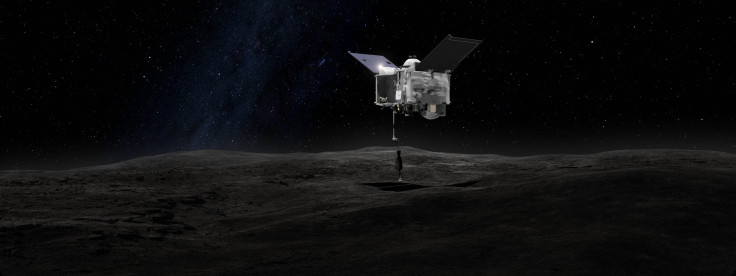NASA's OSIRIS-Rex Mission Update: Spacecraft Finds No Earth-Trojan Asteroids In Fourth Lagrangian Area

NASA announced Friday that its OSIRIS-Rex spacecraft — bound for the near-Earth asteroid Bennu — had successfully scanned part of its surrounding space for Earth-Trojan asteroids. Although no such asteroids were discovered, the scan demonstrated that a key instrument on board the spacecraft was functioned much better than expected.
“The Earth-Trojan Asteroid Search was a significant success for the OSIRIS-REx mission,” OSIRIS-REx Principal Investigator Dante Lauretta from the University of Arizona, Tucson, said in a statement. “In this first practical exercise of the mission’s science operations, the mission team learned so much about this spacecraft’s capabilities and flight operations that we are now ahead of the game for when we get to Bennu.”
Scientists believe that Earth-Trojan asteroids exist in the Earth-Sun Lagrangian points L4 and L5, which are stable points 60 degrees in front and 60 degrees behind Earth in its orbit. However, so far, only one such asteroid has been discovered.

OSIRIS-Rex’s search was restricted to the L4 point — a region it flew through en route to Bennu and which it scanned using its MapCam imager.
“The Earth Trojan survey was designed primarily as an exercise for the mission team to rehearse the hazard search the spacecraft will perform as it approaches its target asteroid Bennu,” NASA said in the statement. “This search will allow the mission team to avoid any natural satellites that may exist around the asteroid as the spacecraft prepares to collect a sample to return to Earth in 2023 for scientific study.”
For astronomers, studying asteroids is one of the few ways they can hope to glean how the solar systems and planets evolve. Unlike the rocks on Earth, which have, over its 4.5 billion-year history, become contaminated, asteroid material is pristine, giving us a glimpse of what the solar system was like in its infancy.
The 4,600 pound OSIRIS-REx spacecraft, launched in September, will reach Bennu in 2018. After a careful survey of the asteroid’s surface in the visible and infrared spectrum, a robotic arm will collect between 2 and 70 ounces of sample material and return it to Earth via a detachable capsule in 2023.
Bennu, an asteroid with a diameter of just over 1,640 feet, was chosen because of its accessibility, size and composition. Scientists expect Bennu to hold vital clues to the origin of water and organic molecules that may have made their way to Earth, eventually creating conditions needed for life to exist.
NASA estimates that the asteroid, which comes very close to Earth every six years, has a “high probability” of affecting the planet sometime in the late 22nd century.
© Copyright IBTimes 2024. All rights reserved.





















